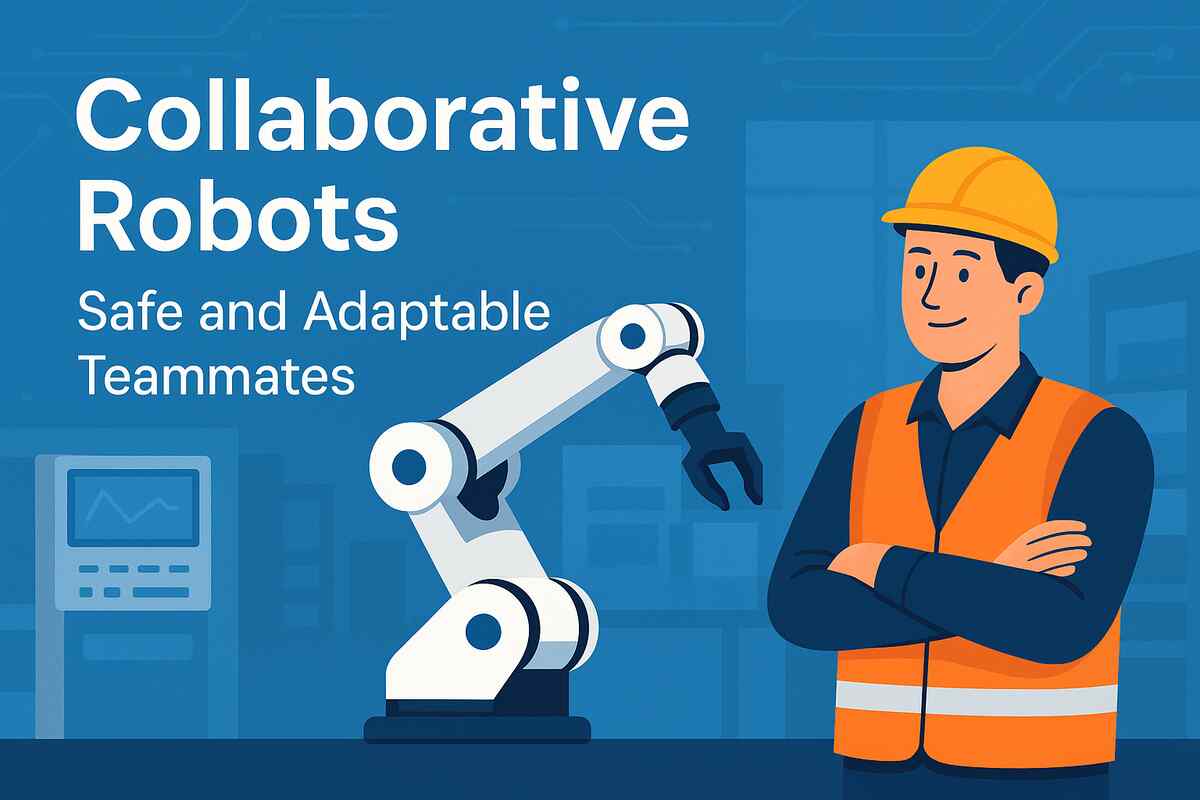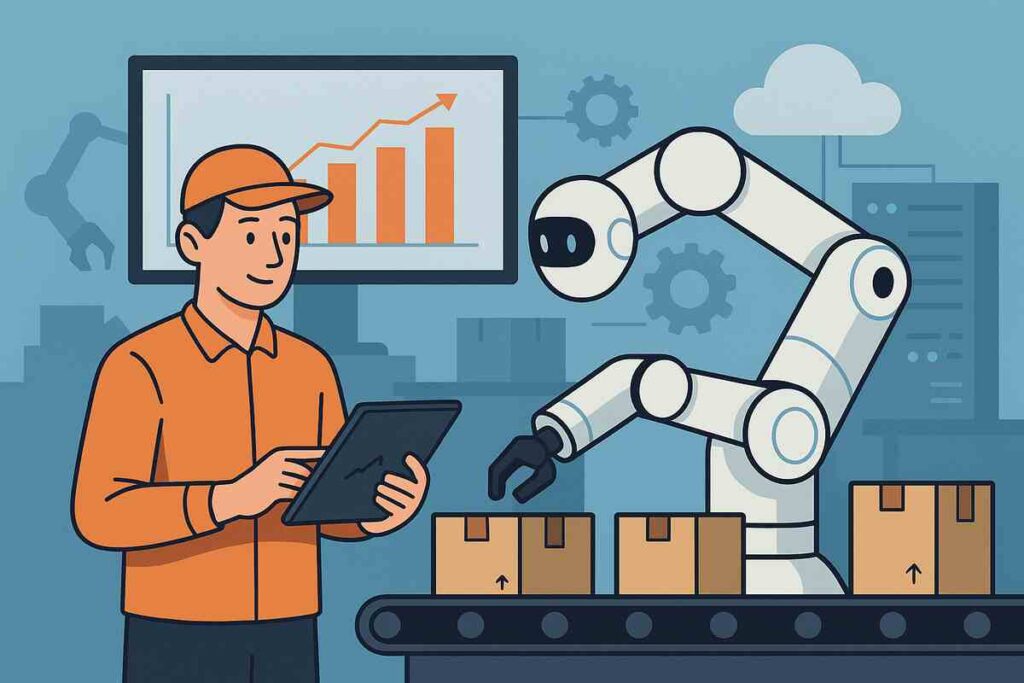Physical Address
304 North Cardinal St.
Dorchester Center, MA 02124
Physical Address
304 North Cardinal St.
Dorchester Center, MA 02124

In the modern world of smart manufacturing and industrial automation, Collaborative Robots—commonly referred to as cobots—have become indispensable teammates on the factory floor. These advanced robotic systems are redefining how humans and machines work together by prioritizing safety, adaptability, and efficiency. Unlike traditional industrial robots that require safety cages and isolated zones, cobots are designed to work directly alongside people, enabling seamless collaboration.
Whether you’re a plant manager, automation strategist, or industry newcomer, understanding the role and potential of collaborative robots is essential to staying competitive in today’s Industry 4.0 era.
Collaborative Robots are specially designed robotic systems capable of working safely in close proximity to humans. With built-in safety features like force-limiting sensors, vision systems, and responsive programming, cobots are engineered to share tasks, not replace workers.
According to the Robotics Industries Association (RIA), collaborative robots differ from traditional industrial models by focusing on shared workspace and safety-certified controls (RIA/ISO Standards).
Common applications include:

The market for collaborative robots is experiencing rapid growth. Statista reports that global revenue from collaborative robots is expected to exceed $11 billion by 2030 (source). This boom is driven by:
With plug-and-play capabilities and user-friendly interfaces, cobots are now a key component of smart factory ecosystems.

Rather than replacing human labor, cobots complement it by automating repetitive or strenuous tasks. A human might handle decision-making and dexterous assembly, while the cobot manages repetitive movements—improving both safety and productivity.
Cobots comply with ISO/TS 15066 and ISO 10218 safety standards, ensuring safe operation without the need for traditional cages. As outlined by ISO (source), features include:
Thanks to intuitive drag-and-drop interfaces or direct teaching modes, cobots can be trained with little or no coding. This makes them ideal for small and medium enterprises that lack deep robotics expertise.
Without the need for cages, cobots are ideal for environments with limited floor space, such as:
According to McKinsey & Company, cobots often have a payback period of less than a year when deployed effectively, particularly in applications that run across multiple shifts (source).

Cobots are designed to stop immediately upon detecting resistance or collision with a human. This force limitation ensures safe contact.
Advanced models from Universal Robots and ABB Robotics integrate 3D cameras and lidar to map their surroundings, adjusting speed or trajectory as needed (ABB Collaborative Robotics).
Programmable “soft zones” define where the robot can operate safely, reducing risks in high-traffic human areas.
| Feature | Collaborative Robots | Traditional Industrial Robots |
|---|---|---|
| Safety | Integrated and compliant | External fencing required |
| Programming | No-code or low-code | Expert programming needed |
| Space Requirements | Low | High |
| Cost and Integration | Low to moderate | High |
| Best For | Flexible workflows | High-volume repetitive tasks |
Despite their advantages, cobots have trade-offs:
As noted by the MIT Center for Collective Intelligence, successful cobot implementation depends not just on the technology, but on how well it’s integrated into human workflows (source).
Looking ahead, several key trends are shaping the future of cobots:
Yes, when deployed under proper guidelines. They are especially popular in sectors like electronics, pharma, and light manufacturing.
Evaluate your workflows. If tasks are repetitive, ergonomically stressful, or low-value, a cobot can offer immediate benefits.
No. Cobots are designed to augment, not replace, skilled labor. They excel at consistency, not creativity or judgment.
Collaborative Robots are more than just machines—they’re adaptable, intelligent, and safe teammates shaping the future of smart manufacturing. By working hand-in-hand with human operators, cobots are unlocking new levels of efficiency, safety, and innovation in industries that demand agility.
From simplifying complex workflows to enabling more personalized production models, collaborative robots are at the forefront of the Industry 4.0 revolution. As they continue to evolve with advances in AI, vision systems, and cloud control, cobots will only grow more capable—ensuring they remain indispensable teammates on tomorrow’s factory floor.